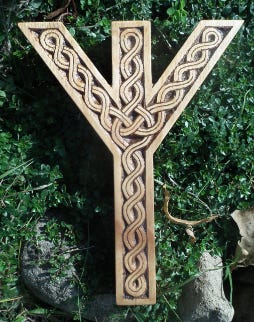Magic in fantasy fiction can manifest in grand, mythical forms—powerful wizards casting spells, enchanted creatures roaming vast worlds, and legendary artifacts capable of altering reality. But for my money, one of the most intriguing and immersive representations of magic is found in the practice of crafting. In these systems, magic is not just a force of nature to be wielded by spellcasters; it is carefully shaped, forged, and created by those with the skill and knowledge to craft magical objects, imbue materials with power, or even channel magic through their hands. Crafting as a magic system adds a fascinating layer to fantasy worlds, providing opportunities for deeper worldbuilding, and character development.
Crafting Magic: Creation as a Path to Power
At its core, crafting as a magic system emphasizes creation. Magic is no longer just a gift of innate ability or a knowledge of arcane spells; it becomes something tangible, something that can be touched, shaped, and honed by those with the requisite skill. This shift transforms magic into an art form, rooted in craftsmanship. Whether the forging of magical weapons, the brewing of enchanted potions, or the weaving of spells into textiles, crafting provides an avenue for characters to wield magic in a more intentional way. This process of crafting magical objects requires immense concentration, talent, and specialized knowledge, adding both complexity and a sense of realism to the magical system.
In Mistborn by Brandon Sanderson, for example, the magic system is deeply tied to the craft of metallurgy. Characters craft and use metals to harness specific magical abilities, such as flying, manipulating objects, or enhancing their physical attributes. The precision with which metals must be crafted is a crucial part of the system—an imprecise alloy could result in a loss of power or dangerous side effects.
When I read Mistborn for the first time, I was gobsmacked by this new-to-me magic system. It was unlike anything else I’d come across, and to this day, I still think about flying with metal.
Crafting Through Materials and Elements
One of the most compelling aspects of crafting as a magic system is its reliance on specific materials imbued with magical properties, (such as Brandon’s character Vin learns). These materials are often rare, dangerous, or require specialized knowledge to extract and work with, making the act of crafting itself a perilous and revered task. The materials used in magical crafting can be tied to elements of the natural world, such as metals, gemstones, herbs, or even the essence of a creature or spirit.
In The Name of the Wind by Patrick Rothfuss, the protagonist, Kvothe, becomes adept at understanding the magical properties of various materials. Whether he is crafting poisons, creating enchanted devices, or studying the arcane properties of substances, Kvothe’s understanding of materials and how they interact with magic is essential to his growth. The magic of crafting is not only about the act of creation, but understanding the qualities of the materials that make up the world around the crafter.
Crafting as an Expression of Skill and Mastery
Crafting magic is not just about the materials; it is also about the craftsmanship itself. In many magic systems, the strength and potency of the magic depend on the skill of the crafter. Creating a magical item or artifact requires not only a knowledge of the materials but also an understanding of the techniques and artistry needed to bring the magic to life. The act of crafting becomes a form of personal expression, a skill that reflects the crafter’s mastery, ingenuity, and emotional investment in their work.
The crafting of magical items often has a symbolic significance too. In The Lord of the Rings by J.R.R. Tolkien, the forging of the Rings of Power is not just an act of creation, but a reflection of the character of the beings who crafted them. For the Elven smiths, the creation of the Rings is an art that seeks to preserve beauty and harmony, while for Sauron, the creation of the One Ring is an act of domination and control.
Rune Crafting and Enchanting: The Power of Symbols
A common method of crafting magic is through the use of runes, sigils, or other magical symbols inscribed on objects to give them magical properties. This practice of rune crafting or enchanting connects magic to written or carved symbols, imbuing them with power based on the meaning and significance of those symbols. Crafting becomes a form of writing or inscribing the arcane, and the objects crafted in this way become repositories of magic, capable of holding spells or providing protection.
In The Black Prism by Brent Weeks, chromaturgy is a form of magic based on the manipulation of color. This system allows magic to be crafted from color, with each color representing a different aspect of magic. The creation of magical items involves understanding how to manipulate these colors to achieve specific effects, much like an artisan creating a work of art. The objects and their magical properties are rooted in the symbolism of color and the skill of the craftsperson who can control it.
The Consequences and Cost of Crafting Magic
Crafting as a magic system also often introduces a consequence for using magic. In my opinion, there should be consequences! Because otherwise, what does the magic-wielder have to lose? As an avid fantasy reader, I want to see the magic-wielder at risk of losing something…paying the price for using that magic. And it better be good! Thankfully, in many stories, the act of crafting something magical is not without its sacrifices. Whether a toll on the crafter’s health, an emotional cost, or a moral dilemma, crafting magic often comes with a price.
In The Broken Earth trilogy by N.K. Jemisin, orogeny (a form of earth magic) has significant physical and emotional consequences for those who practice it. Similarly, in The Inheritance Cycle by Christopher Paolini, the act of crafting magical items—such as the forging of a sword or the creation of a magical gem—requires both skill and sacrifice.
Conclusion
Crafting as a magic system in fantasy fiction offers a unique way to engage with magic. For a writer, grounding magic in the tangible act of creation enhances worldbuilding, provides new dimensions to character development, and introduces opportunities for thematic exploration. For a reader, crafting magic can set a book apart from the pack, not to mention provide another way to get immersed in a world and story.
Crafting systems can vary greatly, from the manipulation of materials and elements to the use of symbols and runes, and serve as a mechanism for both personal growth and external conflict. In all its forms, crafting offers a fresh perspective on the ways magic can shape and be shaped by the world it inhabits—creating something both familiar and extraordinary in the process.
Do you have a favorite magical crafting system or an idea you’d like to see explored? Share your thoughts in the comments below—I’d love to hear from you! If you’re fascinated by the art and power of crafting in fantasy fiction, subscribe to An Enchanted Life for more deep dives into magical systems, worldbuilding tips, and all things fantasy. Let’s continue this journey together—sign up now and never miss an enchanting moment!







I’m reading the Broken Earth trilogy now, and your post makes me think not about orogeny so much as the magic used to build the Plutonic Engine, and all the purposes to which that was intended, which is less magical crafting than magical engineering I suppose!
Pretty well how i view all new creations. When u put ur "personal touch"(magic) on something u create...Violaaaa 🪄...Ausome read...thank U 🙏💓